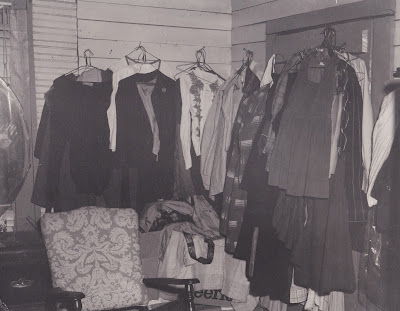“Williams Manor” by
Alice Dugger Grimes, published in the Carolina Co-operator,
December, 1935
It’s over in Franklin
County and from this picture you can see that it’s one of the loveliest country
homes in North Carolina. They do a lot of farming on the 350-acre tract, too.
Should you be longing to feast your eyes upon a lovely
country home with all that implies,
I can very readily suggest one to you that I think will meet your fancy—the
country home of Mr. and Mrs. Simon Williams of Franklin County, situated about
a mile southeast from Franklinton. Here you will be welcomed by a fine old
Southern gentleman, 84 years of age, and his lovely wife, many years his
junior.
This estate of 350 acres has been in the family nearly a
century, and a large, re-modeled, colonial-type dwelling stands where formerly
rows and rows of tents for the housing of the religiously inclined—for this was
originally a famous old camping ground of many, many years back.
Mr. Williams brags with gusto that he has been a farmer for
more than 60 years, never swerving from his allegiance to the soil. He has
other interests though, both financial and civic. His farming activities
embrace cotton, corn, wheat. His cotton acreage is, of course, much cut, but he
tells me that he still makes his bale of cotton to the acre. He has
discontinued the raising of hogs but keeps cows and chickens sufficient for
home consumption.
Good Gardener
But it is as a gardener that I wish to write concerning him,
for he is a superlative one. He tells an anecdote to the effect that he did not
know one flower from another until after he was married, and now that each
year, if possible, he loves them more and more.
His plantings have grown really to enormous proportions, all
for love of them. He attributes all this to the influence of his wife, who is a
garden enthusiast also.
Looking through the columned openings of the lower floor the
other morning, I counted no less than 30 containers of cut flowers—and this in
November. Roses of many varieties, among them the White American Beauty,
marigolds of several hues and sizes, zinnias in abundance and of various
shades, ageratum, cosmos, chrysanthemums; this is not unusual, merely quite
every day. This wealth of flowers, together with the open fire and the several
pieces of old mahogany furniture scattered around gave a glowing feeling of
rarely encountered charm.
Leading up to the home grounds is a driveway of about one
quarter of a mile, lined on both sides by a profusion of shrubs and flowers. I
recognized crepe myrtles—several hundreds of them—spirea, forsythia, Japan
quince, cosmos, iris, roses—the cosmos was the only plant in bloom.
Backyard is Beautiful
The rear lawn of “Williams Manor” is but a continuation of
the front lawn. On these lawns have been planted more than 50,000 bulbs of 40
varieties—narcissus, jonquils, daffodils, and when these bulbs are in bloom,
hundreds of people drive out to see them. One thousand rose bushes of 25
varieties of shrubs also lend their beauty to the carpet of green, and several
large trees give dignity to the whole. One of these trees is a large
symmetrical holly, teeming with red berries. Mr. Williams tells me that every
year it is brilliant with berries, never an off-year, and that the leaves are
without the usual thorns.
Mr. and Mrs. Williams are as enthusiastic concerning their
vegetables as they are concerning their flowers, and in their vegetable garden,
being picked daily regardless of the late season, are butter beans, okra, corn,
turnip salad, onions, snaps, carrots, cabbage, parsley, peppers, cornfield peas,
potatoes, tomatoes, salsify, and beets!
Pecan trees afford much of the shade on the rear lawn and
furnish several hundred pounds of delicious nuts every fall. In the orchard one
sees pear, peach, and apple trees. Grapes are here, too, bunch, scuppernong,
and James. From the Concord grapes wine is made, and for more than 50 years Mr.
Williams has been furnishing the Baptist Church of Franklinton with communion
wine.
A great deal of the charm of this country home centers
around its lovely mistress, formerly Miss Josephine Tucker, one of nine lovely
sisters, who radiates her love of the beautiful and her enjoyment of the peace
and bounty so readily felt at “Williams Manor.”























